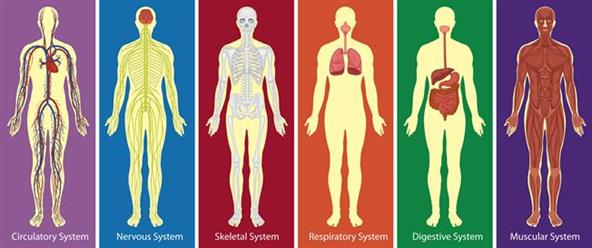
PUMPA - SMART LEARNING
எங்கள் ஆசிரியர்களுடன் 1-ஆன்-1 ஆலோசனை நேரத்தைப் பெறுங்கள். டாப்பர் ஆவதற்கு நாங்கள் பயிற்சி அளிப்போம்
Book Free DemoHave you observed the world around us? Our planet is filled with a wide range of organisms. These living organisms are evolved from the simplest form to a complex level of organisation. As we have studied in our earlier classes, cells are the basic fundamental units of an organism. The cells that perform the same function form tissues. And, the tissues into organs and the organs form the organ systems forming an entire organism.
The organisms formed by organs and organ systems depend on one another with harmonious coordination.
Example:
Bicycling is an excellent example of this. When we ride a bicycle, our muscular and skeletal systems collaborate to move our arms for steering and legs for pedalling in response to nervous system commands.
The muscular system muscles obtain their energy from the respiratory, digestive and circulatory systems. Hence, we can conclude that all these systems rely on each other and work together to maintain the body's homeostatic condition.
A group of organs that work together to perform a specific function is known as an organ system.
The human body comprises of 8 major organ systems as follows:
- Skeletal system
- Muscular system
- Digestive system
- Respiratory system
- Circulatory system
- Nervous system
- Endocrine system
- Excretory system
- Reproductive system

Organ systems
Important!
Organs and organ systems appear from phylum Platyhelminthes to mammals.
This chapter will mainly discuss the structure and functions of various organ systems like the digestive system, excretory system and reproductive system in human beings.
An outline of the various organ systems and their functions
Organ Systems | Organs | Functions |
Integumentary | Skin and skin glands | Involved inprotection, excretionetc., |
Skeletal | Skull, vertebral column, sternum, girdles and limbs | Provides shape, support and form to the body |
Muscular | Muscle fibres | Contraction and relaxationresulting movement |
Nervous | Brain, spinal cord and nerves. | Conduction and transmissionof nerve impulses |
Circulatory | Heart, blood and blood vessels | Responsible for thetransportation of respiratory gases, nutritional substances and waste products |
Respiratory | Respiratory tract and Lungs | Breathing and exchange of gases |
Digestive | Digestive tract and digestive glands | Involved in the digestion, absorption and egestion of food |
Excretory | Kidneys, ureters, urinary bladder and urethra. | Elimination of nitrogenous waste products |
Reproductive | Testes and ovary | Gamete formation, hormone secretions, and development of secondary sexual characters |
Sensory | Eyes, nose, ears, tongue and skin | Responsible for sight, smell, hearing, taste and touch |
Endocrine | Pituitary, Thyroid, Parathyroid, Adrenal, Pancreas, Pineal body, Thymus, Reproductive glands, etc. | Co-ordinatesthe functions of all organ systems |
Reference:
https://www.vecteezy.com/vector-art/434408-different-systems-of-human-body-diagram